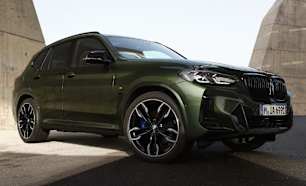I said that it’s like a rollercoaster, and it really, truly is. The air doesn’t quite rush through your hair as much, sure - but with the roof off, the windows down and the speedometer constantly edging towards licence suspension, it’s a real hoot of an experience.
It just feels so tight - the carbon-fibre monocoque chassis is rigid and super stiff. You hit a cats-eye and its all so sensitive, you could mistake it for having hit an actual cat.
Alfa Romeo’s DNA drive modes - the letters stand for Dynamic, Natural, All Weather - is one of those proper examples of this type of system done well. There’s a marked difference between how these different settings operate, where some other drive modes out there are more sedate in their adjustments. There’s a fourth mode - Alfa Race - which I didn’t dare sample on public roads. Dynamic was enough to test my mettle.
The steering in Natural mode is lovely - there’s great weighting and feedback, super direct and incredibly in touch with the surface below you, and the engine isn’t quite as zesty, but still offers tremendous response on the move.
It’ll be a difficult choice between this and Alpine A110 and a Porsche Cayman
The ride is firm but composed and compliant in any of the drive modes, and it doesn’t have adaptive suspension. It is a stiffer suspension setup, and though the damping doesn’t change in Dynamic mode, if the surface is anything but perfect you will tram-track and twitch all over the place, because the steering feels even more dialled in.
In Dynamic mode the engine offers amazing response when you’re at pace, building speed incredibly and before you know it, you’re in licence loss zone.
The brake pedal requires some firm footwork - just like in a race car - but it pulls up strongly when you need it to. You’ve just gotta get used to the pedal feel.
The transmission is a good thing at speed in manual mode. It won’t overrule you if you want to find the redline, and it sounds tremendous. The exhaust is exhilarating!
With roof on and windows up there’s very noticeable noise intrusion - lots of tyre roar and engine noise. But remove the roof and drop the windows and you get the full effect of the drive experience - you’ll even get some "sut-tu-tu” wastegate flutter. It doesn’t even matter that much that the stereo system is so rubbish.
At normal speeds in normal driving you do need to be considerate of the powertrain because it is finnicky and slow to react at times. There’s notable lag if you’re gentle on the throttle, both from engine and transmission, and the fact peak torque doesn’t come on song until 2200rpm means there’s lag to contend with.
It’ll be a difficult choice between this and Alpine A110 and a Porsche Cayman – each of these vehicles has a very different character. But for me, this is the most go-kart like and it is, undeniably incredibly involving to drive.






